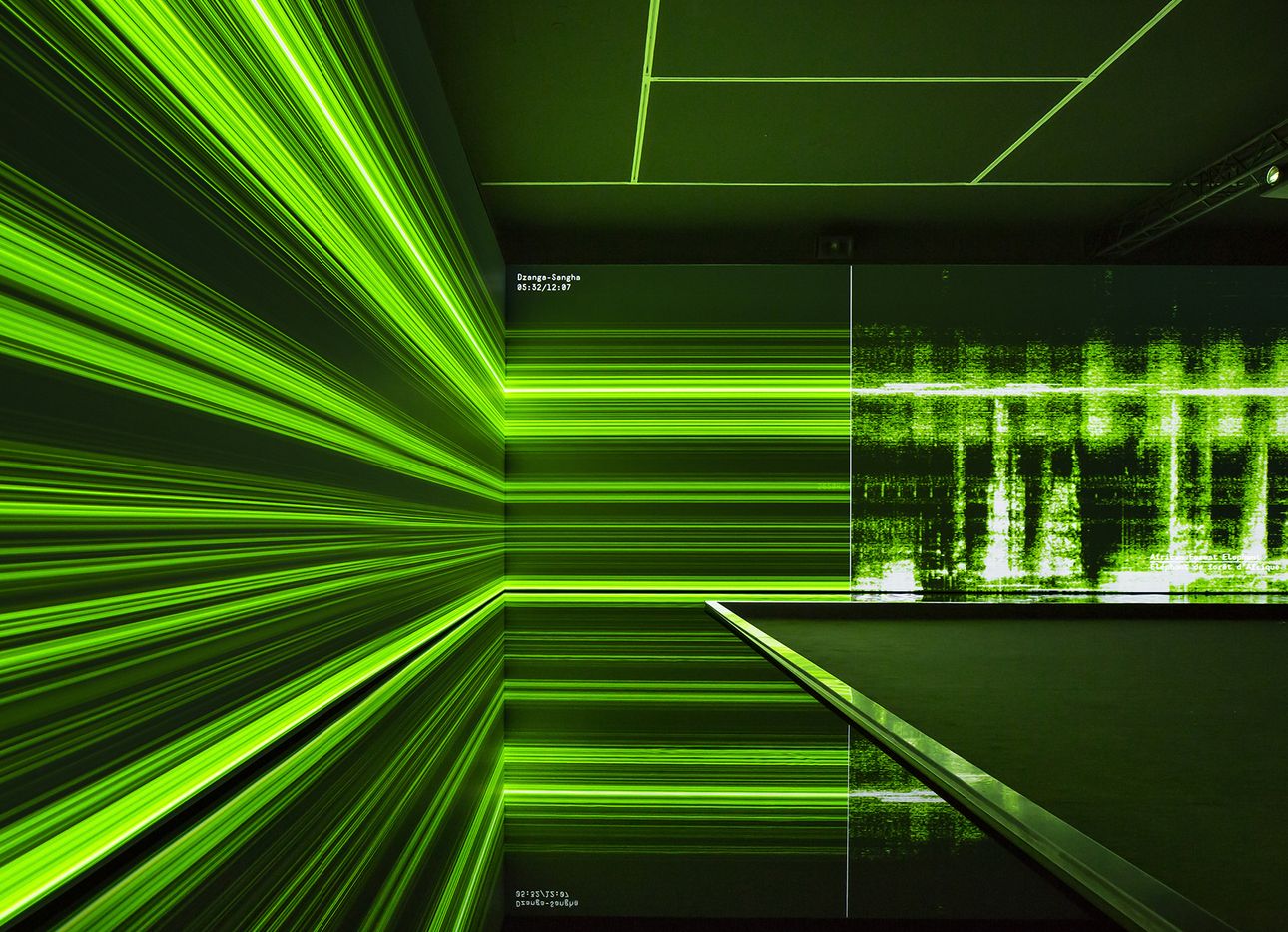
Bernie Krause and United Visual Artists Translate Nature’s Sonic Landscapes Into an Emotive Spectacle
To the attentive ear, symphonies abound—especially in the wild. Musician and author Bernie Krause has been recording nature’s soundscapes for decades in an ongoing exploration of bioacoustics, the branch of science concerned with the production, transmission, and reception of the sounds made by living organisms. Krause, who discusses his work on Ep. 127 of our At a Distance podcast, has captured more than 5,000 hours of audio created by more than 15,000 terrestrial and marine species in some 2,000 habitats—about half of which, by his estimate, no longer exist due to logging, mining, and other human activities.
A selection of the recordings feature in the exhibition “The Great Animal Orchestra” (Nov. 20, 2021, through May 22, 2022)—named after Krause’s 2012 book—that will make its North American debut at the Peabody Essex Museum in Salem, Massachusetts, this week. The show distills Krause’s sonic accounts into a series of spectrograms—animated, sound-wave–like graphic illustrations created by the London-based collective United Visual Artists—that give the animal noises visual form. First shown in 2016 at Paris’s Fondation Cartier pour l’Art Contemporain, which commissioned the project and now holds it in its permanent collection, the immersive exhibit has been seen by more than a million people in London, Milan, Seoul, and Shanghai. The show’s latest iteration includes filmmaker Vincent Tricon’s new documentary on Krause, which was produced by Cartier and comprises previously unpublished interviews and archival footage, providing further context to the artist’s life and creative process.
The experience takes place in a darkened, sound-isolated gallery. Large screens cover the walls and display spectrograms that represent seven ecologically at-risk locales while speakers play calls by their native species. (The entire sequence lasts about an hour and a half.) Included in the recordings are wolf packs from Algonquin Park in Ontario, Canada; birds from the subarctic Yukon Delta; gorillas from the Central African Republic; and whales off the coasts of Canada and Hawaii. Colored lines on the screens depict each animal’s vocalizations: Higher-pitched sounds by bats, insects, and other animals are at the top, followed by amphibians in the middle and lower-pitched mammals at the bottom.
While Krause’s professional genesis was in electronic music—in many ways the opposite of organic sound—he understands how individual notes can converge to create an intricate aural fabric. He experimented with synthesizers in the ’60s and helped introduce them to film soundtracks, including those of Apocalypse Now and Rosemary's Baby, and to pop songs, including tracks by David Byrne, The Doors, Brian Eno, Mick Jagger, and Van Morrison. In 1968, Krause and his late musical partner, Paul Beaver, made an album for Warner Brothers called In a Wild Sanctuary. “It was the first album to use natural sound as a component for orchestration,” Krause says, noting that it was also the first on the theme of ecology. The soundscapes he captured—in a park north of San Francisco—left such an impression on Krause that he eventually shifted his practice to documenting natural resonances. His recordings have since been used in scientific research, artworks, movies, and tracks by other musicians.
The exhibition is perhaps Krause’s most captivating work to date. As the layered graphics pulse and pan, images of the animals are notably absent—leaving visitors to think about how their decisions might threaten to erase the creatures (and their homes) entirely, and what behavior changes can be made to try to remedy the problem. It’s Krause’s way of helping people of all ages focus their attention. “Kids sit quietly on the floor for ninety minutes without joking or screwing around with each other, and they watch this stuff, quietly,” he says. “There’s no exchange except what’s going on on the screen and coming out of the speakers.” For Krause, the experience provides a brief but valuable respite from a typical day, when “we’re distracted by so much noise around us, by our media, by other impediments that stand in our way of clear, forceful action.”